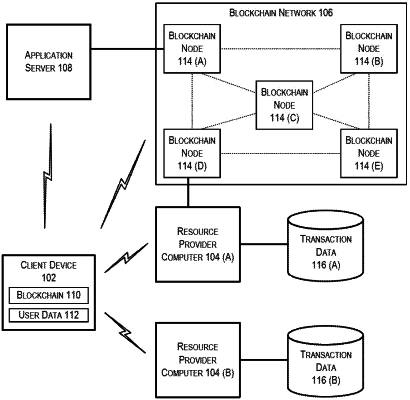| CPC G06Q 20/4016 (2013.01) [G06Q 20/3825 (2013.01); H04L 9/0637 (2013.01); H04L 9/0897 (2013.01); H04L 9/302 (2013.01); H04L 9/3247 (2013.01); G06Q 2220/00 (2013.01); H04L 9/50 (2022.05); H04L 2209/56 (2013.01)] | 19 Claims |

|
1. A method comprising:
receiving, by a validation node from an acceptance node, a transaction record for a transaction conducted between the acceptance node and a user, the transaction record including at least information related to the user and transaction details;
identifying, based on the information related to the user, a blockchain associated with the transaction conducted between the acceptance node and the user;
appending the transaction record to the blockchain;
generating a signature by:
generating a first hash of at least a portion of the information related to the user;
generating a second hash of at least a portion of the transaction details;
combining the first hash and the second hash into a text string,
wherein combining the first hash and the second hash comprises concatenating the first hash and the second hash;
hashing the text string to form a third hash, the third hash being a derivative of the text string; and
signing the derivative of the text string, using a private key associated with the validation node to form the signature;
attaching the signature to the transaction record that is appended to the blockchain to update the blockchain, wherein the blockchain is a ledger storing information regarding transactions conducted between one or more acceptance nodes and the user; and
sending, to the one or more acceptance nodes that are associated with one or more resource providers computers, the updated blockchain;
verifying, by the one or more resource providers computers, verify the a second transaction with the user based on the information stored in the updated blockchain;
determining, by the one or more resource provider computers, determine a level of risk associated with the second transaction; and
determining, by the one or more resource provider computers, detcrminc whether to conduct the second transaction based on the determined level of risk.
|